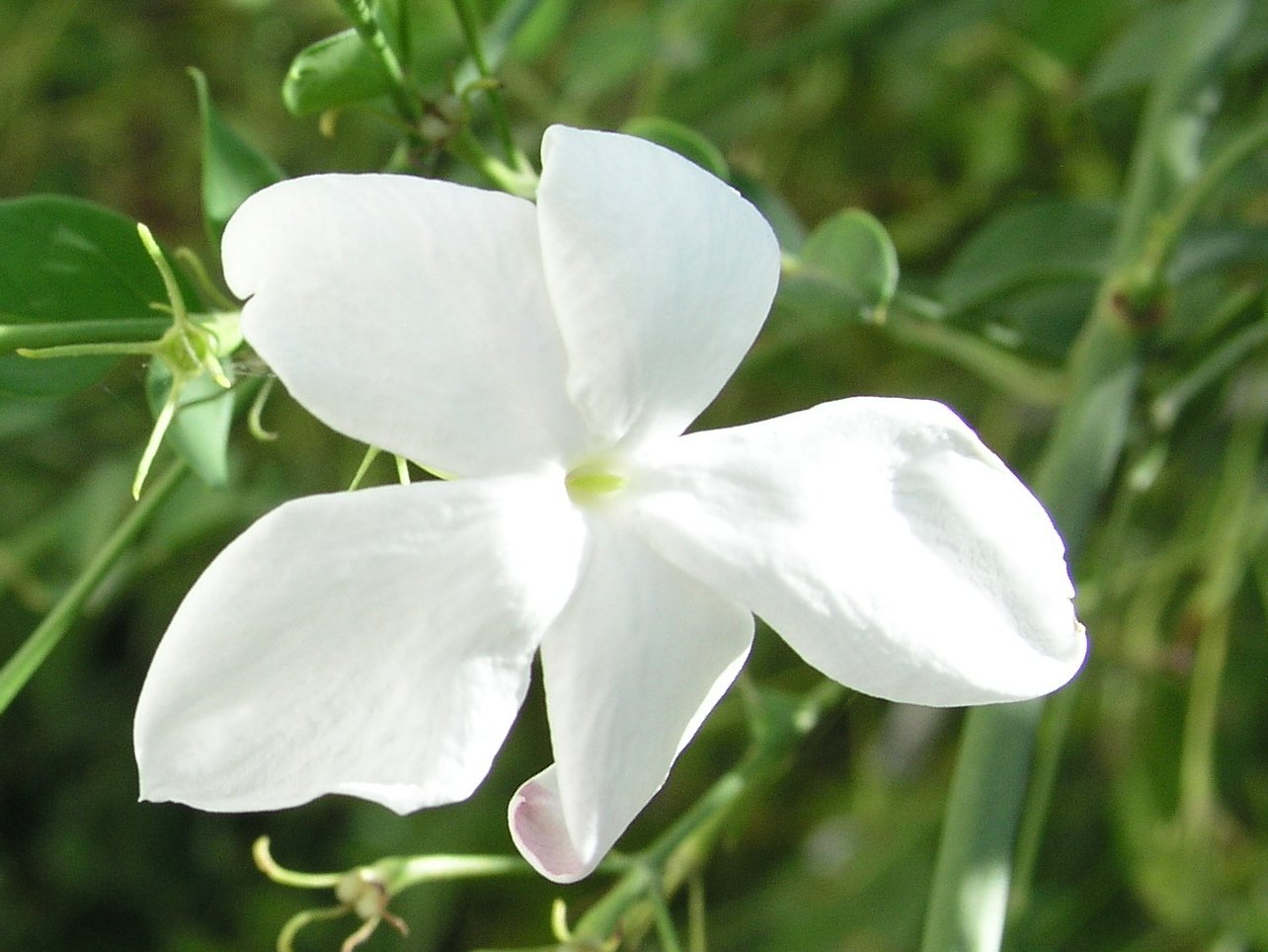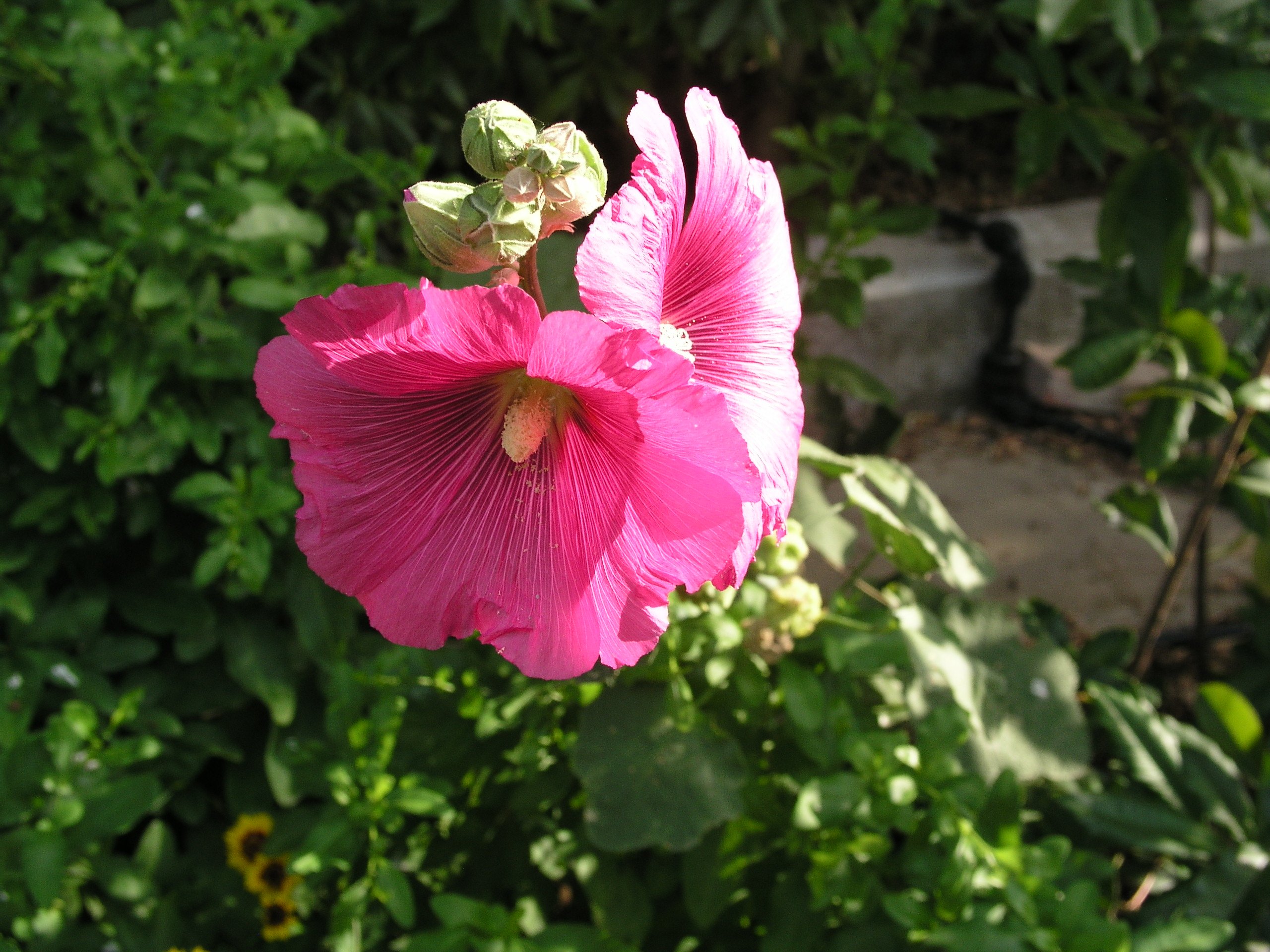It’s amazing how plants reproduce themselves
By Patricia Jordan
Some plants throw out underground rhizomes, which pop up away from the mother plant. Plumbago is a good example of that. Just to ensure that the plant reproduces though, they also have sticky seed capsules that can cling to anything or anyone passing close by, like a hairy animal or a trouser leg.
From the tiniest annual seeds like poppies or larkspur, to the bird-eating seeds of sunflowers and the heavy pods of Caesalpinia gilliesii, the garden is awash with spent flowers and seeds at this time of the year. So, how can you collect them in order to have young plants for next year?
Harvesting seeds is easy. The evening is better than the morning when they may have morning dew on them. Collect the same seeds together, keeping them in a paper bag or envelope as plastic just encourages mould, and write the name and year on them. Seeds can last for years in the right conditions, hence the seed banks in various parts of the world that protect our plant diversity.
Some seeds are able to grow where they fall and need no special treatment. Some are tiny, like grains of pepper and don’t need to have much of a covering and with the first rains will begin to germinate. You will find that annuals like cerinthe, nigella and cleome do this with ease. Hard shell seeds, including sweet peas, need some attention and may need a cold spell in the fridge first, or a tiny chip through the outer casing to help awaken them. I know of gardeners who place them on a piece of damp kitchen roll until they germinate. Some seeds need to pass through the digestive systems of birds before they will germinate, hence fig trees growing abundantly under our veranda, where the sparrows roost every night amongst the wisteria branches.
Most years everything I sow germinates, but this year I have had more misses than hits. I think this was perhaps because they were bought seeds and not acclimatised to the Cypriot climate or the potting compost wasn’t ideal. I have tried larkspur (a relative of delphinium) several times and this time I had success with them in a pot and have enjoyed their lovely colours. Cleome was another potted success this year from my own acclimatised seeds of last year, but my sweet pea seeds failed miserably. I usually just sow them straight into the ground, so perhaps I will start them off in pots next time round. The seeds you sow may not turn out to be what you expected though! For instance if the plant is a hybrid (the result of cross pollination of two different plants) you will see one or the other in your flower bed. This happened to me with Nicandra ‘Cream Splash’, the seeds of which I have grown successfully for years. This year the only one to germinate was the species, which is quite a monster and not the front of border plant that its cousin is!
WHAT TO DO IN THE GARDEN IN AUGUST
Are you ready for the summer holidays? I know I always say this but even if you are going away for just for a day trip to the beach or mountains in search of some cooler air, remember to put away expensive garden equipment and furniture, making a note of any serial numbers and locking up your garage or shed securely. If you have expensive pots or ornaments in your garden take a photograph of them and if you fill the bottom of the pots with big rocks, then thieves will find them difficult to remove. Put your name or a code word, known only to you, somewhere on the pots, as well as your garden furniture. Sadly, there are many opportunist thieves about, but if you make things difficult for them, then they might just pass you by.
This summer has been exceedingly hot already making watering plants difficult. If you are going away you may have a gardener or neighbour who will do the job for you and keep your plants ticking over. If not, and you have a computerised watering system in your garden, set the timer to come on at the same time every evening for 15 minutes, which should take care of them for you. Plants, rather like us, need regular feeding and watering. You would also need to consider how your potted plants will cope without your regular attention. You can link them to your watering system of course with spaghetti feeders, but it is likely that they will have to be watered by hand. Move them out of the sun, under trees is ideal or if you don’t have trees find a sheltered spot for them. Sit them on a tray of small pebbles and direct the water onto them, trying not to wet the leaves as they may just rot and cause other problems.
Whilst the garden holds its breath this month and growth is slow, there are bugs out there to wage war on. Lots of Med flies are looking for somewhere to lay their eggs. They need soft skins on fruits to be able to penetrate and if any of your oranges or grapefruit are colouring up at all they will be in there, so watch out! Other favourite fruits of theirs are apricots, which are luckily finished now, as well as nectarines and peaches, so keep spraying for Med Fly or if you don’t like spraying, ensure that you hang those sticky yellow cards amongst the branches of your fruit trees to catch the blighters.
Some flowers come to the fore this month and a great favourite in Cyprus is Jasminum officinale, whose lovely pink-tinged white flower buds delicately hang on long stems over supports in every village garden and as their petals open their light fragrant perfume is so much a part of summer here in Cyprus! This is only achieved with drastic pruning in late winter when it is possible to cut the stems right back to the main part of the tree. It may look awfully bare to start with, but you will be rewarded by many flowers on the ends of the fresh drooping stems. I understand that many years ago it was customary here to pick the flowers and thread them together to make garlands or necklaces.
Another summer favourite from the West Indies that you may be able to grow in the more humid coastal gardens here, is Cestrum nocturnum, sometimes called ‘Pakistani Nights’ as its really heady perfume, thought to be the most fragrant in the world, comes into its own in the evenings. The greenish-white tubular flowers remain in a semi-closed state until then, when they open fully to release their perfume. This can be so strong that people with respiratory problems may find difficulty in breathing, so bear that in mind.
Enjoy the summer and don’t try to do too much. It can all wait until the weather starts to cool down, which according to custom should be after Maria’s Assumption on August 15. Watch the weather pattern from August 3-15 (Maria’s Day). Each day will tell you what is coming in the following months. This period of time is called Minallayia and many Cypriots swear by its accuracy.
Plant of the Month
Hollyhocks
Hollyhocks are natives of the Eastern Mediterranean and it is thought that the Crusaders may have collected the seeds on their journeys in this part of the world all those years ago. They can have single or double flowers in a vast range of colours. The Latin name for hollyhocks is Alcea rosea and they belong to the Malvaceae family, along with Hibiscus. The buds usually appear in May and June here and flower for a long period.
You can start them off by sowing the seeds in pots before transferring them into their spots in the garden, remembering that they may reach heights of over 2,5 metres in full sun, so they are best planted at the back of borders or along hedge or fence lines for impact. They will grow in poor soil, but you will get better results with some feeding. They are fairly drought tolerant, but should you need to water take care not to wet the leaves, as this can lead to rust forming on them and ensure there is good air circulation around the plants. At one time every cottage garden in England had hollyhocks around the doorway and they have been used in herbal medicine from time immemorial. They can be used for gastritis, coughs, cystitis, bruises, falls, sunburn and as a gargle for sore throats and whilst young leaves are edible, the petals can be used in tea. The fibres on the stems and leaves can cause skin irritations so do take care. I am told that growing them next to beehives makes for beautiful honey.









Click here to change your cookie preferences